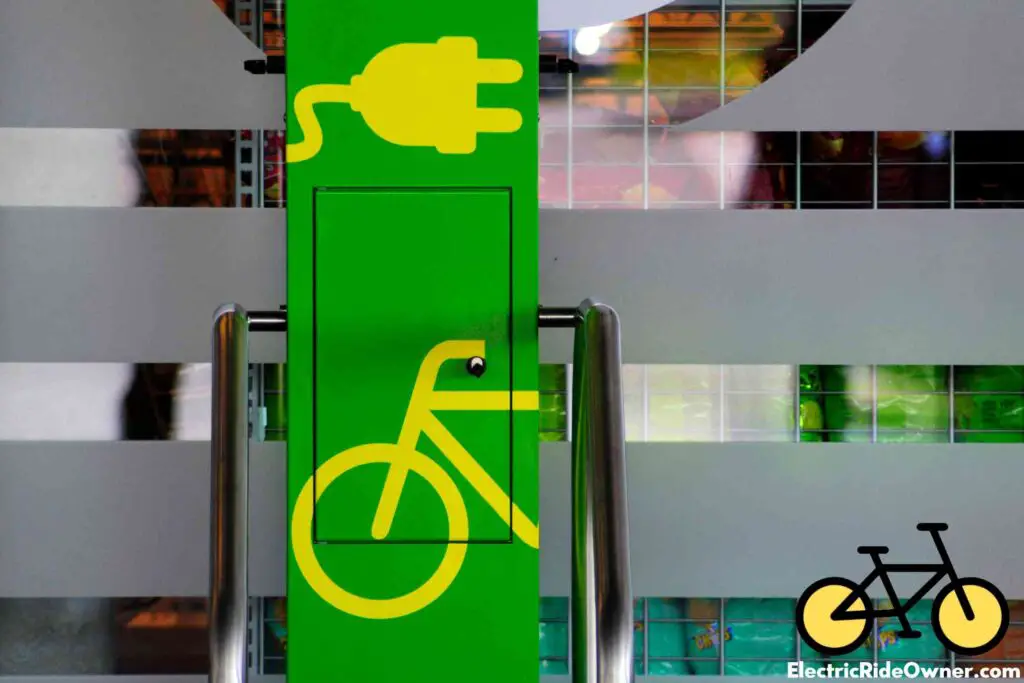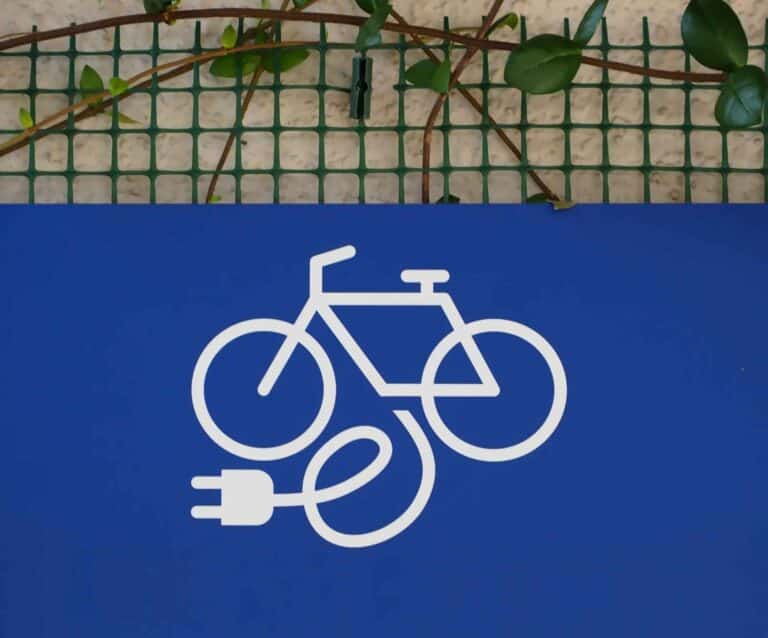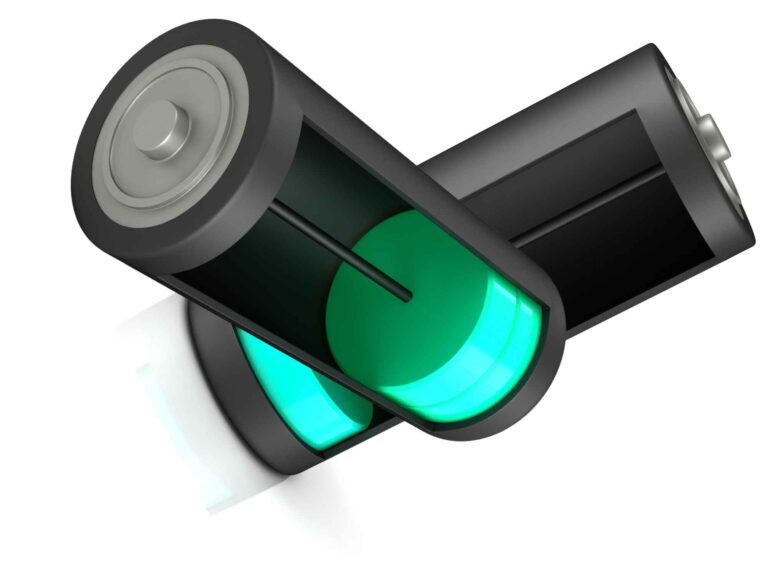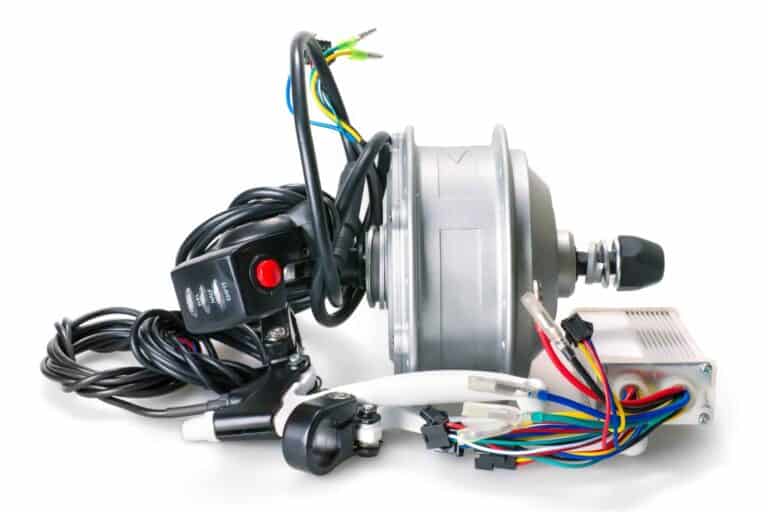Where To Charge Your Electric Bike When You’re Away From Home
Riding an electric bike is enjoyable and exciting, but it becomes less so when the battery drains in the middle of your journey. This situation can be frustrating, leaving us wondering where to charge our electric bike when we’re away from home.
- Electric Bike Charging Station
- Solar Panel
- Generator
- Bike or eBike Shops
- Cafes and Restaurants
- Campgrounds
- Anywhere where there is an available outlet
1. Charging eBike on Electric Bike Charging Station
As electric bikes have gained popularity, electric bike charging stations have been built to allow electric bike riders to conveniently recharge their e-bikes when the batteries are drained. Most charging stations intended for electric bicycles have standard sockets, so you can simply park your e-bike and plug in your charger. However, there are also e-bike charging stations where it is required to remove your battery for charging, although this isn’t an issue as most electric bike batteries are removable.
Always remember to bring your own charger or cable because not all charging stations have the same charger or cable as yours. If you’re planning a long journey with your electric bike, it’s best to prepare the things you might need on the way. Additionally, since electric bike charging stations are only available in some areas, planning your rides in advance and identifying possible charging locations along your route is a good idea.
Moreover, carrying some cash with you would also be ideal, as using charging stations may come with a fee.
2. Charging eBike Using Solar Panel
Solar panels are now widely used in homes, and it’s also possible to use a solar panel to charge an e-bike away from home. Many manufacturers have created portable solar panels for on-the-go charging, reducing the cost of powering your electric bike.
Charging an e-bike using solar panels away from home can be a bit challenging. When using solar panels, you’ll need to purchase a solar charge controller and connectors. Once you have the necessary components, you’ll also need to know how to set them up. Fortunately, there are solar panel kits that come complete with all the necessary components, which you can purchase.
Electric bike riders have the option to mount solar panels on their e-bikes or carry them and set them up when needed. Mounting solar panels on an e-bike can be advantageous because they can collect energy from the sun while you ride. However, it may make controlling or maneuvering your electric bike more difficult. If you choose to take the solar panel with you and set it up when your battery is drained, it might take longer to charge your e-bike. Alternatively, you can position the solar panel in direct sunlight at your home, ensuring it’s prepared for your ride.
It’s important to note that solar panels may not be able to fully charge your electric bike when the weather is unfavorable, or the sun isn’t shining.
You can check out the portable e-bike solar charging panels sold by Quietkat for $299. These solar charging panels have a maximum power output of up to 150 watts. They can be used not only for electric bike charging but also for your gadgets.
You can also check out these portable and foldable solar panel kits on Amazon.
- Dokio Portable Foldable Solar Panel Kit
- MARBERO 100W Portable Solar Panel Battery Charger
- EnginStar 100W Foldable Solar Panel Charger
- Nicesolar Portable 100W Solar Panel Kit
If you’re seeking guidance on charging your electric bike using a solar charging panel, you can watch the video below.
3. Charging eBike with a Portable Generator
You can also charge your electric bike using a portable generator, providing an excellent alternative for recharging your e-bike battery when running low. This option is convenient during long rides in areas lacking electric bike charging stations.
Portable generators may be somewhat pricier than solar panels and can be pretty noisy. Furthermore, portable generators can be powered by batteries, solar panels, or fuel. If your portable generator requires fuel to operate, always ensure that you have the specific type of fuel needed for it to function properly. Portable generators powered by fuel and batteries are suitable for all weather conditions as they don’t rely on sunlight.
When choosing a portable generator for your electric bike, always ensure the generator you purchase can provide the right power output and sufficient capacity to charge your e-bike’s battery. Using a generator that generates the appropriate voltage and amperage that matches your e-bike’s charger is recommended to avoid any risks. Moreover, we strongly advise following proper safety guidelines when using a portable generator for your own safety.
Check out these portable generators that you can purchase for your electric bikes.
- FirstPower Pro 300W Power Supply
- aeliussine 1000W Pure Sine Wave Power Inverter
- EF ECOFLOW Portable Power Station DELTA 2
- Jackery Portable Power Station Explorer 500
4. Charge Your eBike on Bike or eBike Shops
You can also charge your electric bike at bike or e-bike shops, provided they offer charging services. Politely inquire with the owner or someone in charge to see if you can charge your electric bike for a couple of hours. In most cases, a fee may be associated with charging your electric bike, so make sure you have cash on hand. Additionally, when charging at bike or e-bike shops, remember to bring your own charger, as they may not have chargers available.
5. Charge Your eBike in Cafes and Restaurants
Cafes and restaurants are also places where you can charge your electric bike. They provide a pleasant environment to relax in while you wait for your electric bike to charge. So, if your battery is completely drained, you can stop at the nearest cafe or restaurant, order your favorite food or drink, and enjoy your time as your electric bike charges. However, you can’t simply walk in and charge without permission. Always ask for permission before doing so. It’s important to note that not all cafes or restaurants will allow this, so whatever their decision may be, always be polite.
6. Charging eBikes on Campgrounds
Charging your electric bikes at campgrounds is also doable, especially for those who love outdoor adventures and stay in campgrounds or nearby areas. Many campgrounds with RV facilities have electric hookups that you can use for charging your electric bike.
Of course, before doing so, always ask for permission from the person in charge. Additionally, make sure you have your charging equipment with you. Moreover, it’s best to wait for your electric bike to be fully charged. You wouldn’t want to leave your e-bike unattended, as other people may be staying there. Keep in mind that charging e-bikes may take a while, depending on your charging and battery capacity. So, while waiting, it would be great to bring something to sit on. Also, remember to bring cash, as charging at campgrounds may incur a fee or be free. It’s always better to be prepared.
7. You Can Charge Your eBike Anywhere Where There is an Available Outlet
You can undoubtedly charge your e-bike anywhere. Electric bikes typically use standard electrical outlets and chargers, so you can charge them anywhere as long as there is a compatible socket in the area. Therefore, you can charge your electric bike at someone’s home if you visit a friend or a family member. You can also charge your electric bike in your office if you use it to commute to work. Overall, you can charge it in any public or private establishment with available and compatible outlets. Just always make sure to ask for permission before doing so.

Where Can I Charge My Electric Bike Battery?
As a general rule, you can charge your electric bike battery at home or charge it on the go. Charging an electric bike on the go is a perfect charging alternative for riders looking to embark on long adventures with their electric bikes.
You can charge your electric bike battery in various locations. The very first location is at home, where you can enjoy peace of mind as you don’t have to wait for it to charge. You can check it from time to time.
You can also charge your electric bike battery at an e-bike charging station if one is available in your area. However, charging the e-bike battery at a charging station may cost you money, so having cash on hand is advisable.
Furthermore, you can also charge your electric bike battery at public and private establishments, campgrounds, bike and e-bike shops, offices, and friends’ homes. These are good places to charge your electric bike battery. Just remember to ask for permission when doing so.
Moreover, you can use solar panels or a generator to charge your e-bike battery away from home. Charging your e-bike on the go is perfect for riders who want to have a long day of fun and adventures with their electric bikes. For more insights on charging your e-bike on the go, visit our article ‘Charging eBike on the Go (Car Battery, Inverter, Power Bank, Solar).’
Can Electric Bike Be Charged at Home?
As a general rule, you can charge your electric bike at home, which is often the first and most preferred place for e-bike riders to charge their e-bikes. Charging at home provides peace of mind as you wouldn’t need to attend to your e-bike every second.
When you’re at home, you can choose to charge your electric bike with the battery or the battery alone, provided your e-bike has a removable battery. Charging at home means you don’t need to be present every second; you can set an alarm or check on your e-bike occasionally to ensure it won’t be overcharged.
If you plan to charge your electric bike at home, always follow charging guidelines to ensure safety. As the saying goes, it’s better to be safe than sorry. Here are some helpful tips to keep everything and everyone safe when charging:
- Use a compatible charger when charging your electric bike. Most e-bike sellers include chargers in the package, so you won’t have to worry about finding a compatible one.
- Charge your e-bike battery away from metal objects, as metals are good conductors of electricity. Charging your e-bike battery near a metallic object can lead to a short circuit.
- Keep your e-bike battery away from flammable materials while charging, as the battery may explode and potentially start a fire.
- Avoid overcharging your electric bike because doing so can lead to overheating, which may result in a fire or explosion.
“Recharging is a way of preparing for a new journey.”- electricrideowner.com
Can You Charge an Electric Bike at a Charging Station?
As a whole, you can charge an electric bike at a charging station as long as it has the appropriate and compatible voltage for your e-bike’s battery. When charging at a charging station, always bring your own connector or charger.
Charging stations are among the places where you can charge your electric bike when you’re away from home. However, it’s important to note that not all areas in your state may have these charging stations, making it challenging to find one when you’re on a ride far from home. Additionally, many charging stations require fees, and the rates can vary depending on your state and the charging station’s owner.
There are also charging stations designed for electric vehicles, which operate at a higher voltage than e-bike charging stations. However, some riders have found it feasible to charge their electric bikes at these electric vehicle (EV) charging stations. To do so, ensure you have the correct charger and adapter to charge your e-bike battery.
In areas where charging stations are unavailable, you can explore the option of charging your e-bike at public and private establishments. Always be sure to seek permission before plugging in. Alternatively, you can embrace on-the-go charging using solar panels and generators.
How Much Does an EV Charging Station Cost?
As a general rule, the cost of charging at an EV charging station varies depending on some factors. The charging cost at EV charging stations may be affected by your state’s electricity cost per kWh and some additional fees.
The electricity rate is the primary factor that could affect the cost of charging your electric bike at an EV charging station. As of this writing, the average electricity rate in the U.S. is about 23 cents per kilowatt-hour (kWh). However, since EV charging station companies incur taxes and operational expenses, additional fees are likely added to the overall charging cost per kWh.
\Furthermore, the charging time and capacity of electric bike batteries vary, which can also influence the total cost you must pay when charging.
How Much Does It Cost to Charge an Electric Bike?
As a whole, the cost of charging varies for each electric bike model, depending on several factors. The total charging cost can be affected by the electricity cost in your state, the e-bike’s charging time, and your e-bike’s battery capacity.
In most cases, the cost of charging an electric bike can be computed through the following equation:
Cost of Charging e-bike = [(Voltage x Ah) / 1000] x (rate of charge per kWh) x (hours of charge).
To solve the possible charging cost of your e-bike using the equation above, you must know the following details: the electricity rate in your area, your e-bike’s charging time, and your electric bike’s battery capacity.
Each electric bike model differs in its capacity and charging time. Some may have a capacity of 600Wh, while others may have lower or higher battery capacities. The charging time for electric bikes also varies, with some being fully charged in as little as 2.5 hours while others may take up to 10 hours.
Moreover, the electricity rate varies by state. For instance, as of February 2023, California has an electricity rate of about 28.38 cents per kWh, while New York has an electricity rate of approximately 22.64 cents per kWh. The average rate in the United States is about 23 cents per kilowatt-hour (kWh).
You can visit our article entitled ‘How Much Does it Cost to Charge an eBike (It May Shock You)‘ if you want a deeper understanding of how much it would likely cost to charge an electric bike.
How Do You Charge an Electric Bike When Camping?
As a general rule, you can charge your electric bike using generators, power banks, and portable generators when camping. It’s also possible to charge your electric bike at camping grounds with electric hookups if permitted.
If you decide to bring your electric bike on a camping journey, it’s advisable to have a portable generator, a solar panel, or a power bank as perfect alternatives for charging your electric bike, especially when camping in areas where no charging outlet is available. These alternatives are ideal because you won’t need to search for charging stations or outlets; you only have to set them up, which you can learn by watching videos or asking experts.
When using a solar panel, ensure it’s exposed to the sun for an adequate time to charge your e-bike. Solar panels are an excellent choice, although they may be less effective on cloudy days. Additionally, if you’re using a portable generator, make sure to understand its power source, as some run on gas while others use a battery.
If you don’t have these alternatives, you can explore the area and inquire about the availability of a nearby charging station or any public or private establishments where you can charge your electric bike. In such cases, it’s a good practice to check the map of your route or camping site before heading out so you’ll know in advance if there are potential areas for charging your electric bike.
Furthermore, bringing an extra e-bike battery with you is a great idea, especially when planning to camp far from home.
How Long Does It Take to Charge an eBike?
As a whole, each electric bike model has a different charging time. While most of them can be fully charged in about 3.5 to 6 hours, there are also electric bikes that can be charged a little shorter or longer than that estimate since not all e-bikes have the same battery capacity.
Electric bike batteries come in various capacities. Some e-bike batteries may have capacities lower than 500Wh, while others may exceed 1000Wh, depending on the e-bike model. Each e-bike model is equipped with a charger that may vary in charging speed. Some chargers work quickly, while others take a bit longer. In most cases, you can find the charging time for electric bikes in the e-bike’s specifications. If not, don’t hesitate to contact the seller and inquire about this information.
For newly purchased electric bikes, charging them for approximately 12 hours is advisable. This extended charging time ensures a proper current flow to the battery, which is essential for optimal performance.
Can I Leave My Ebike Charging Overnight?
As a general rule, avoid leaving your electric bike charging overnight, as this can result in overcharging, potentially leading to a short circuit or, in the worst-case scenario, a fire. Always follow the recommended hours for charging your e-bike to prevent unwanted accidents.
If you’re not planning a longer ride with your electric bike, it’s a good practice to charge it to 80-85% capacity. Save a full 100% charge for longer journeys. When charging your electric bike, consider setting an alarm to remind you to check your e-bike at a specific time, or you can check it periodically. There’s no need to be present every second while charging.
If you encounter issues with your electric bike battery, you can check our article “E-bike Battery Problems (A Fix That Actually Works)” for insights on how to handle it properly.






